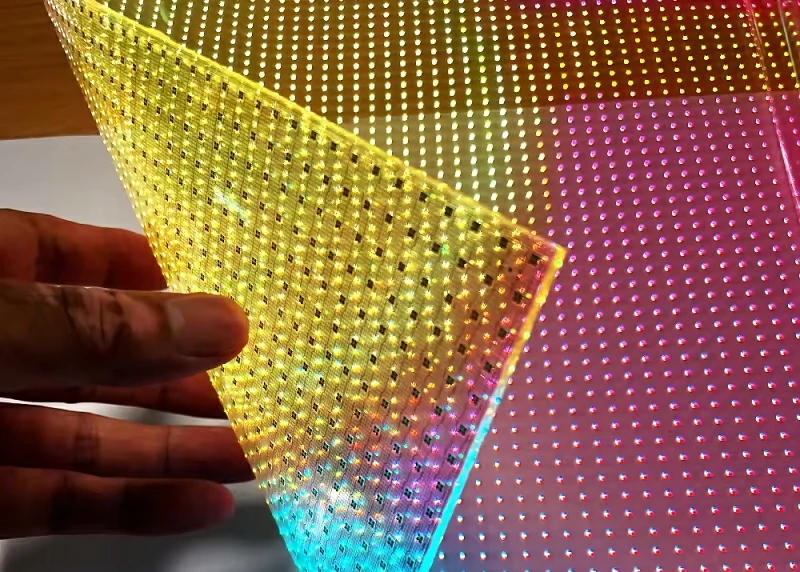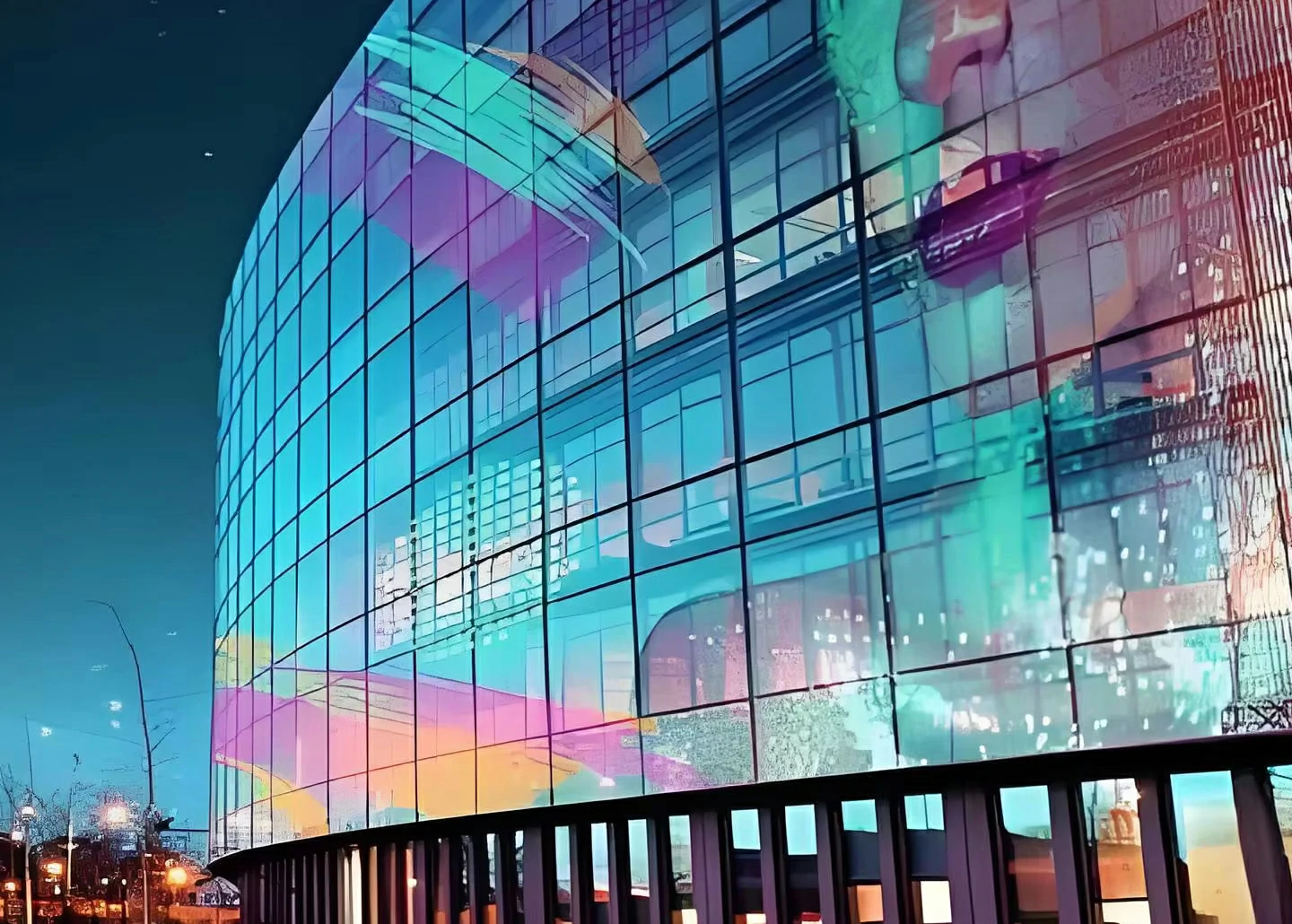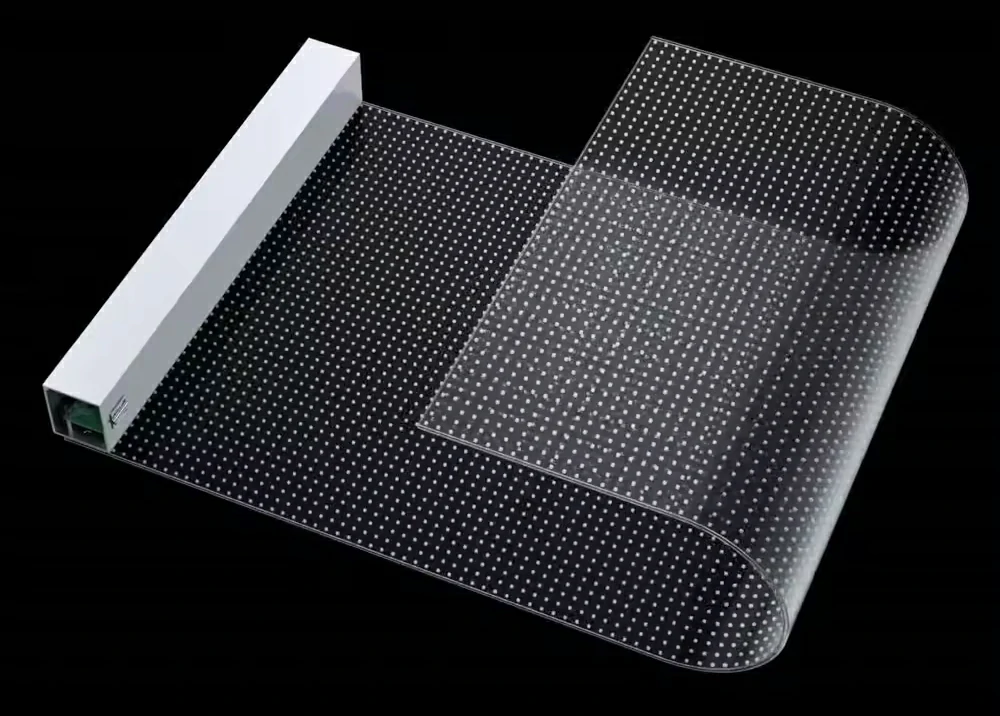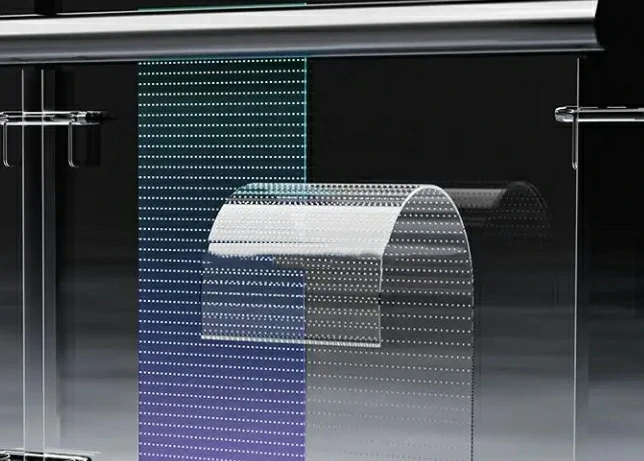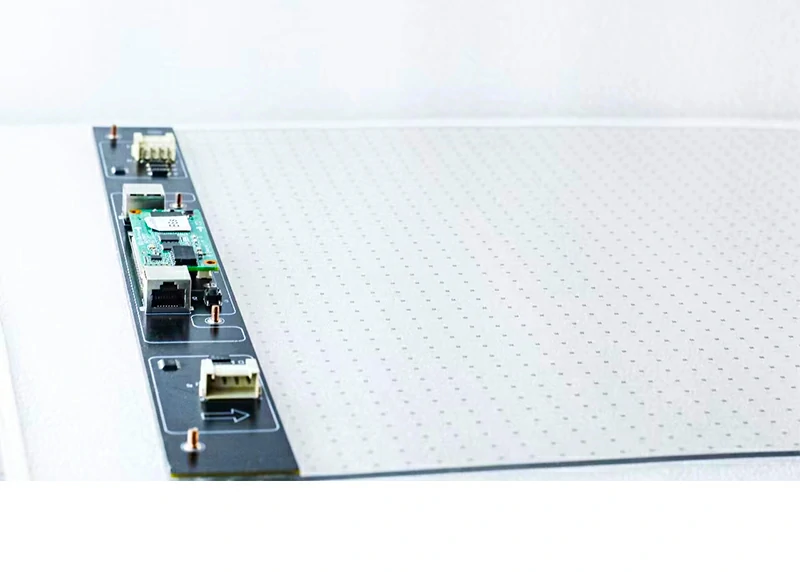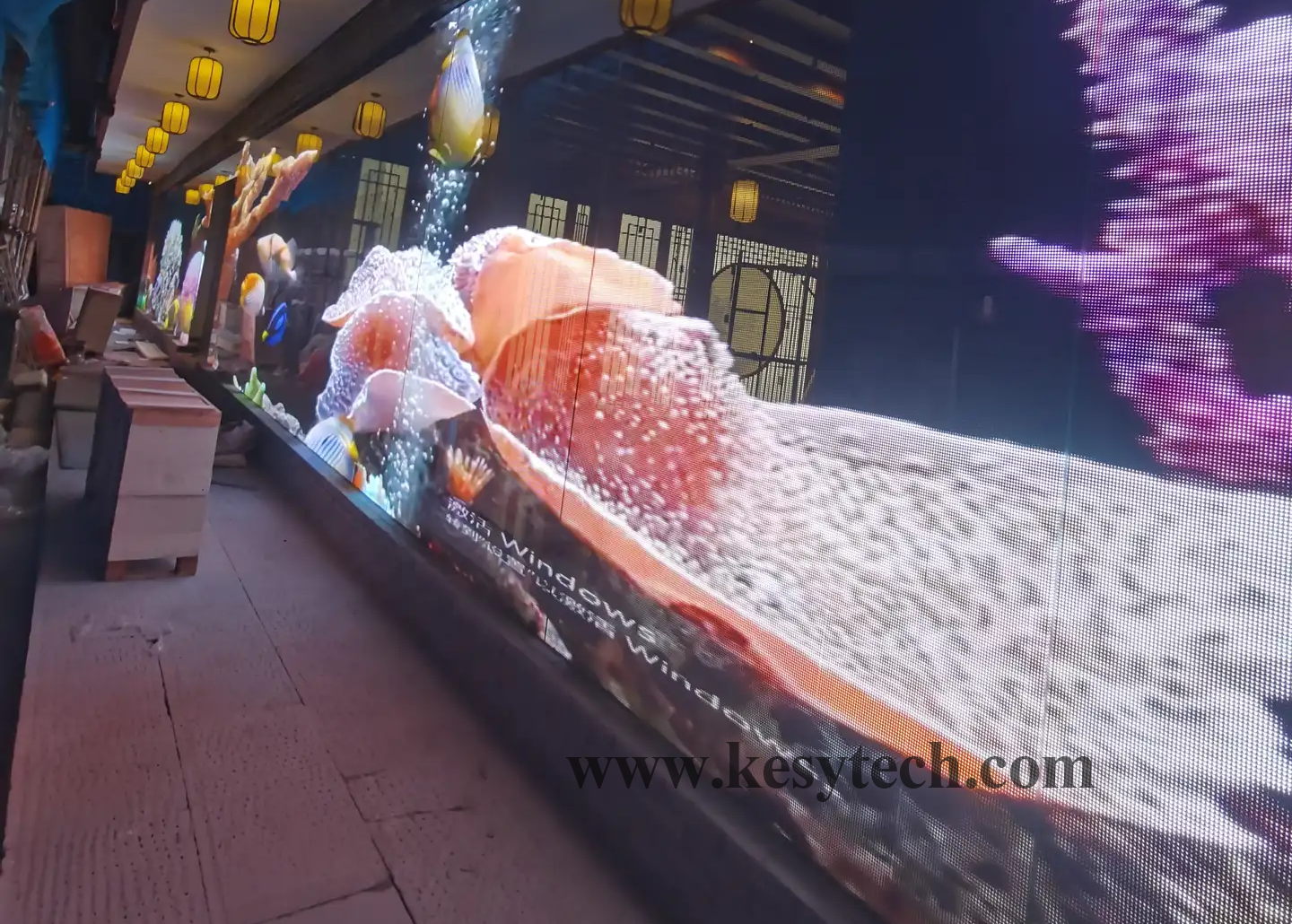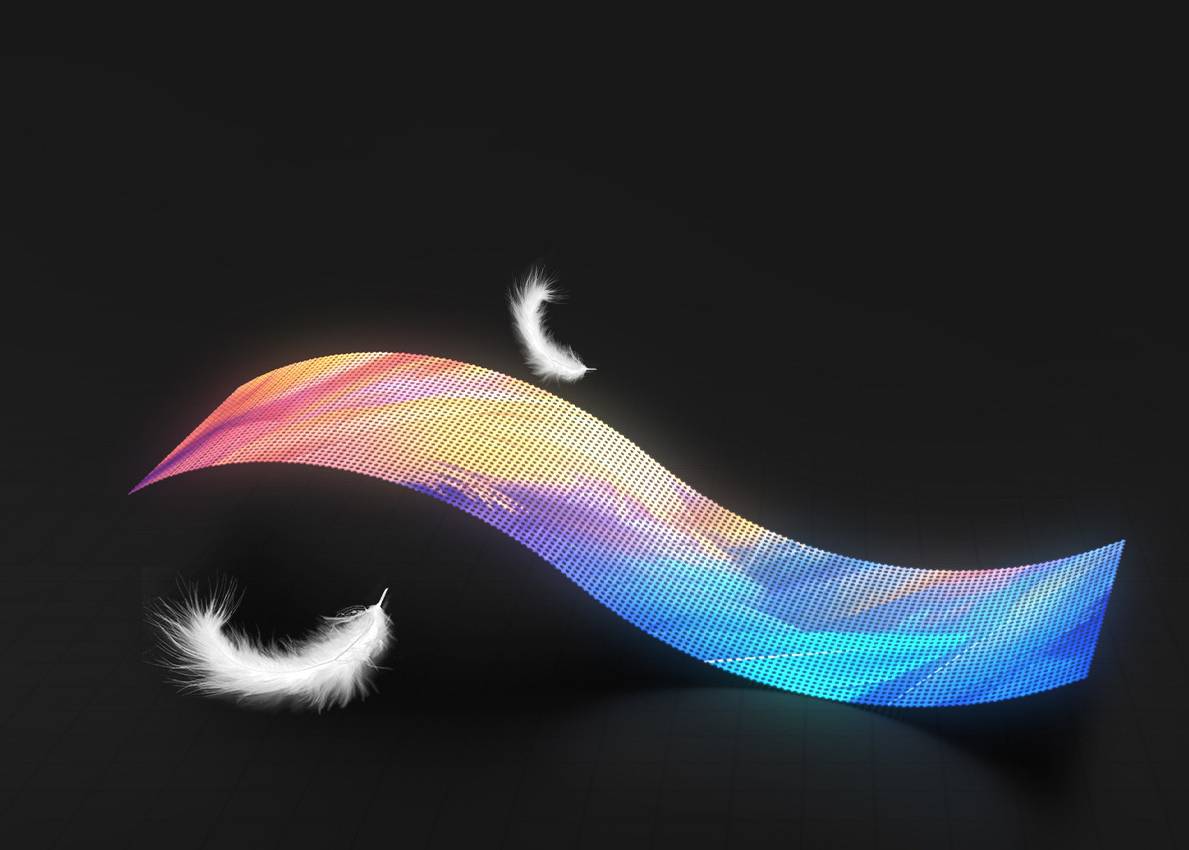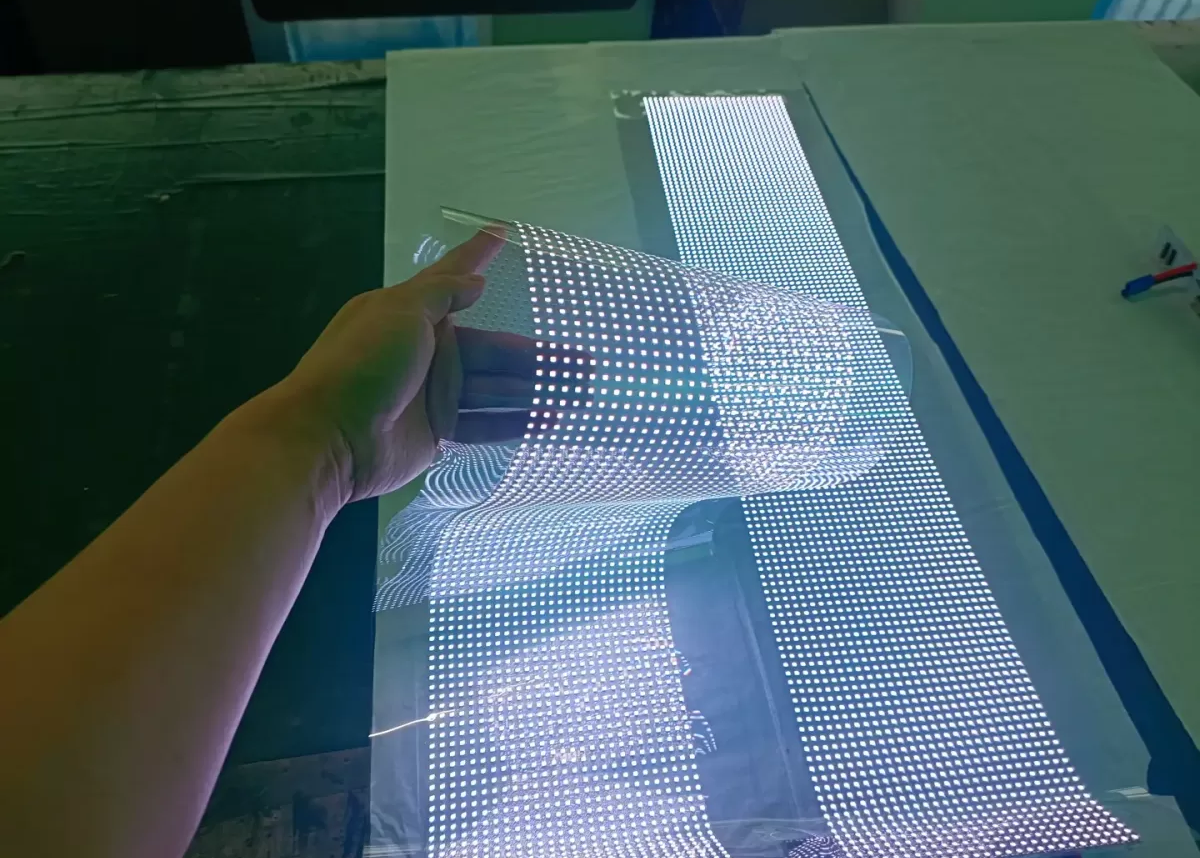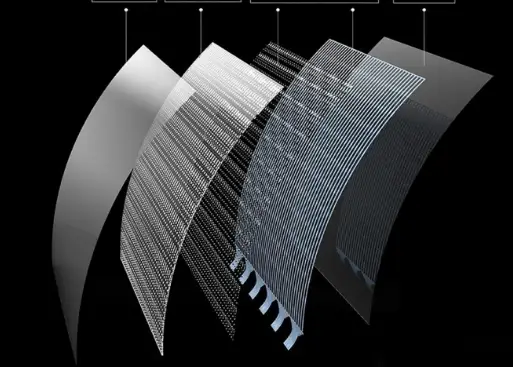Currently, the transparent screen market includes LED holographic transparent screens, LCD transparent screens, OLED transparent screens, and LED crystal film transparent screens. Today, I will talk to you about these various types of transparent screens. Among them, the most widely used in the market are LED crystal film transparent screens and OLED transparent screens. So, which one is better between LED crystal film transparent screens and OLED transparent screens?

The answer is: that LED crystal film transparent screens are more versatile and suitable for large-scale advertising screens compared to OLED transparent screens. This is because LED crystal film transparent screens are easy to install, durable without yellowing, flexible for bending and cutting, and can be freely assembled into large screens without restrictions. In contrast, OLED transparent screens are rigid, cannot be bent or cut, cannot be freely assembled, and are much more expensive.
I can also share with you the characteristics and applications of these transparent screens. If you want to delve deeper into these transparent screens, you can carefully read the following content.
1. LED Crystal Film Transparent Screens
- Features: Durable without yellowing, flexible for bending and cutting, easy to assemble freely, with high brightness, low energy consumption, easy to drive, wide viewing angles, and lightweight and portable.
- Applications: Widely used in e-book reading, mobile reading, vehicle displays, smart homes, commercial displays, education and training, medical diagnosis, etc.
What are the application advantages of flexible LED crystal film screens?
What are the unique advantages of LED crystal film screens?
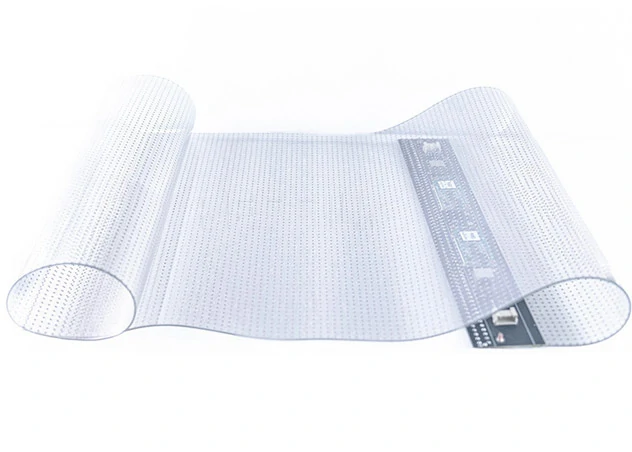
2. OLED Transparent Screens
- Features: Self-luminous, high transparency, high brightness, wide color gamut, thin thickness, low energy consumption, futuristic high-tech design. It can display text, photos, videos on transparent surfaces without obstructing the view.
- Applications: Due to its higher cost, OLED transparent screens are mainly used in high-tech digital products such as transparent screen notebooks, high-end transparent TVs, transportation vehicles, exhibitions, and museums. It is expected to become more widely used in the near future.
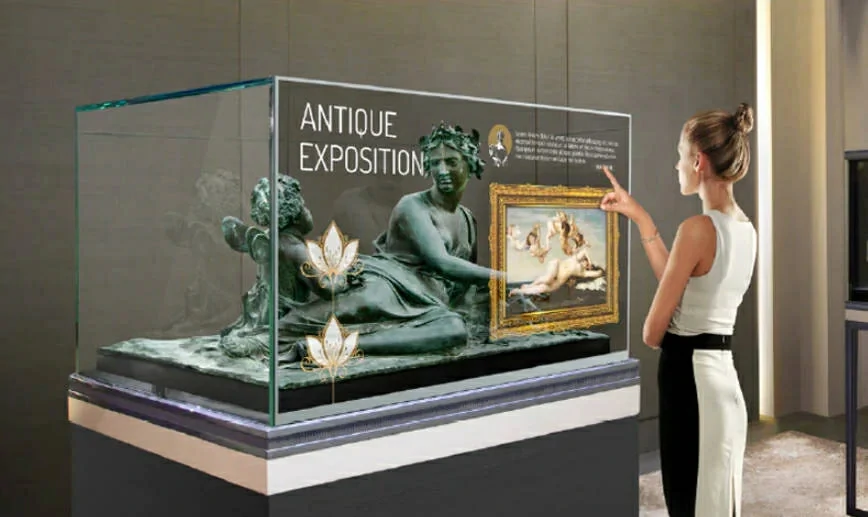
3. LED Holographic Transparent Screens
- Features: Ultra-thin (thickness less than 2 mm), lightweight, flexible for bending and cutting, high definition and brightness, high pixel density, autonomous driving IC ensuring high performance, full transparency, three-dimensional floating sensation for immersive experiences.
- Applications: Widely used in commercial storefronts, business facades, exhibition halls, creative displays, cultural and entertainment venues, and automotive 4S stores, attracting attention with its unique transparent characteristics and powerful display capabilities.
What are the benefits of LED holographic screens?
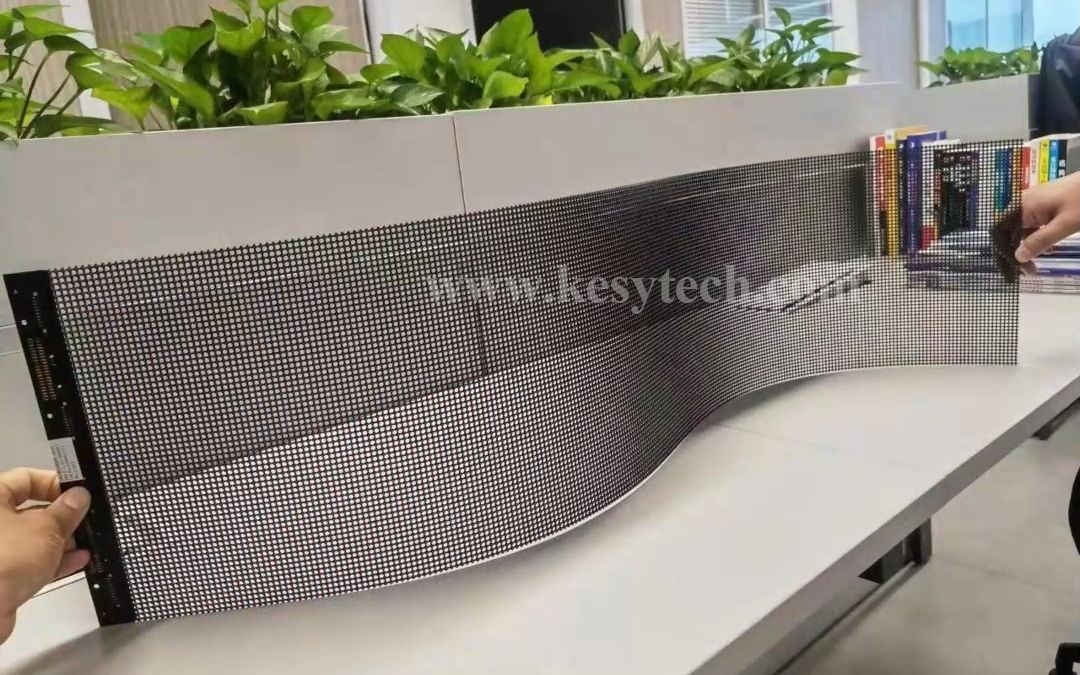
4. LCD Transparent Screens
- Features: High transparency (transmittance up to 50%-90%), presenting a transparent glass-like visual effect when the screen is off, harmonizing with the environment. Thin design with a thin main board, lightweight, and small footprint. Uses ambient light or display items as a backlight to ensure high definition and color fidelity.
- Applications: Widely used in various fields including commercial displays for showcasing jewelry, and watches, enhancing product display effects; architectural decoration replacing transparent flat glass in building facades, providing more design possibilities; stage performances to create perspective effects, enhancing visual effects; and automotive dashboards for innovative driving experiences.


